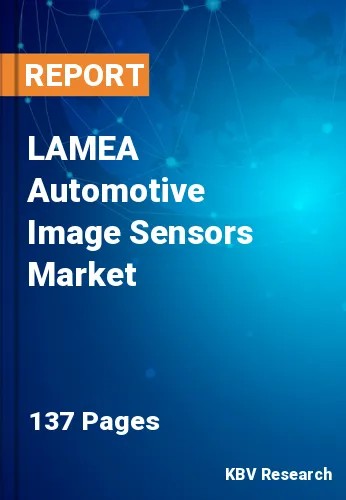
The Latin America, Middle East and Africa Automotive Image Sensors Market would witness market growth of 11.8% CAGR during the forecast period (2023-2030). In the year 2026, the LAMEA market's volume is expected to surge to 8,633.3 thousand units, showcasing a growth of 13.2% (2023-2030).
The automotive industry is undergoing a transformation driven by technological advancements reshaping how vehicles operate, communicate, and interact with the world around them. Among the key enablers of this transformation are image sensors, which have become an indispensable component in modern automobiles. These sensors are at the forefront of automotive innovation, supporting various applications that enhance safety, driving experience, and automation. Automotive image sensors play a pivotal role in many applications, revolutionizing how vehicles perceive their surroundings and operate. These sensors capture visual data from the vehicle's environment and convert it into information onboard computer systems can process.
Advanced driver assistance systems (ADAS) represent a groundbreaking use of image sensors in the automotive industry. To offer lane departure warning, adaptive cruise control, and automatic emergency braking functions, these systems integrate sensors, including cameras. The ability of image sensors to detect and identify objects in real-time is crucial for the effectiveness of ADAS in enhancing driver safety. Image sensors are commonly used in parking assistance systems, providing drivers with a clear view of their vehicle's surroundings. These sensors assist in parallel, perpendicular, and even fully automated parking, enabling precise maneuvering in tight spaces.
According to the International Trade Administration (ITA), the gross domestic product (GDP) of South Africa's automotive industry as a whole was 4.3% in 2021 (2.4% manufacturing and 1.9% retail). As the largest manufacturing sector in the economy, the production of vehicles and automotive components contributed a significant 18.7% of value-added to the domestic manufacturing output, maintaining the industry's position as a major player in South Africa's industrialization process. The automotive industry, which continues to be one of the most prominent recipients of foreign investment, saw seven Original Equipment Manufacturers (OEMs) invest R8.8 billion in 2021, the second-highest annual amount ever, and the component industry also made a sizeable R5.7 billion investment. Thus, the growth of automotive sector in the LAMEA region will propel the market in the region.
The Brazil market dominated the LAMEA Automotive Image Sensors Market, By Country in 2022, and would continue to be a dominant market till 2030; thereby, achieving a market value of $112.5 million by 2030. The Argentina market is showcasing a CAGR of 12.5% during (2023 - 2030). Additionally, The UAE market would register a CAGR of 11.5% during (2023 - 2030).
Based on Technology, the market is segmented into CMOS, and CCD. Based on Vehicle Type, the market is segmented into Passenger Vehicles, and Commercial Vehicles. Based on countries, the market is segmented into Brazil, Argentina, UAE, Saudi Arabia, South Africa, Nigeria, and Rest of LAMEA.
Free Valuable Insights: The Worldwide Automotive Image Sensors Market is Projected to reach USD 6.6 Billion by 2030, at a CAGR of 11.1%
The market research report covers the analysis of key stake holders of the market. Key companies profiled in the report include Samsung Electronics Co., Ltd. (Samsung Group), Continental AG, Infineon Technologies AG, Denso Corporation, OmniVision Technologies, Inc., Sharp Corporation (Hon Hai Precision Industry Co., Ltd), NXP Semiconductors N.V., Gentex Corporation, Canon, Inc., and Teledyne Technologies, Inc.
By Technology (Volume, Thousand Units, USD Million, 2019-2030)
By Vehicle Type (Volume, Thousand Units, USD Million, 2019-2030)
By Country (Volume, Thousand Units, USD Million, 2019-2030)
Our team of dedicated experts can provide you with attractive expansion opportunities for your business.
